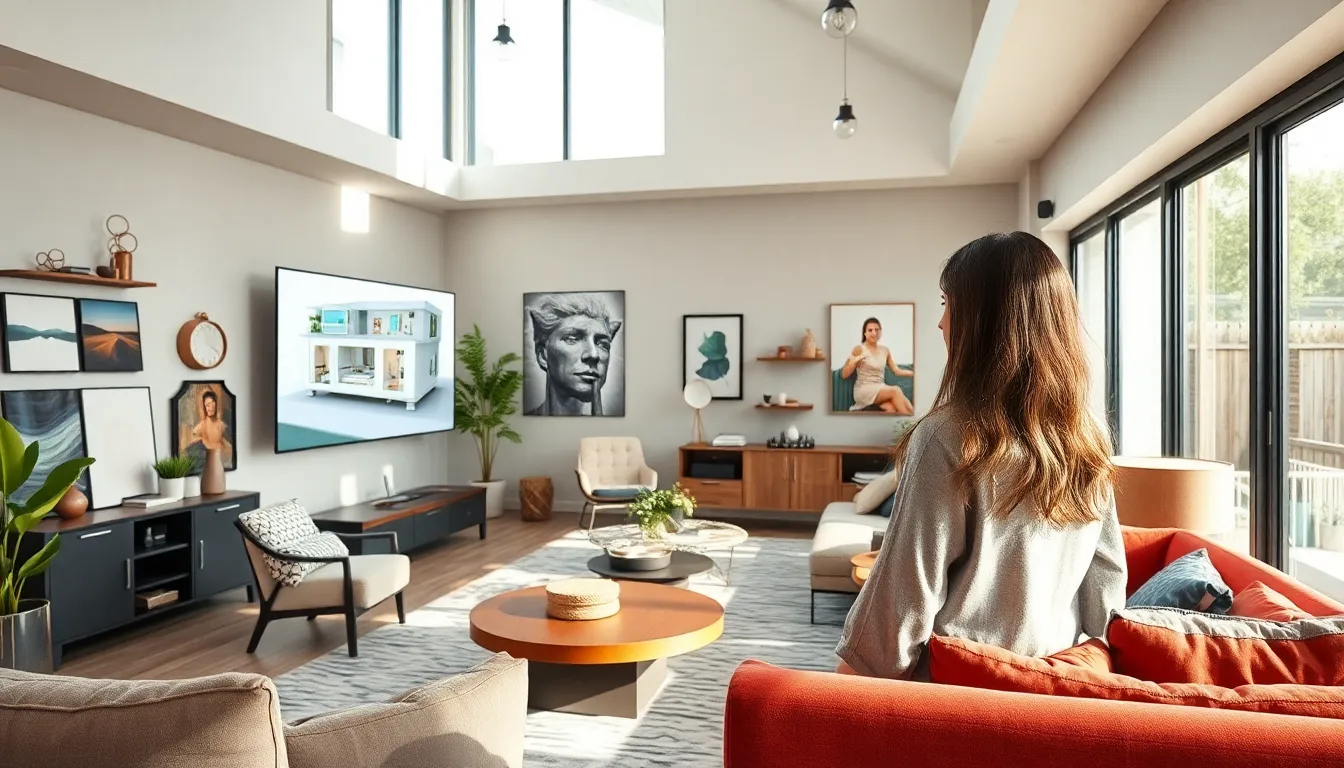
The world of interior design is undergoing a transformation, thanks to artificial intelligence. AI interior design is revolutionizing how spaces are envisioned and created, making the process more efficient and personalized. With advanced algorithms and machine learning, designers can now generate innovative concepts that cater to individual tastes and preferences. Imagine walking into a room that perfectly reflects your style, all thanks to AI’s ability to analyze trends and user input. This technology not only streamlines the design process but also enhances creativity, allowing designers to explore new possibilities. As AI continues to evolve, it promises to redefine the boundaries of interior design, making it accessible and exciting for everyone.
AI Interior Design
AI interior design combines artificial intelligence with traditional design practices to create personalized and efficient interior environments. This innovative approach leverages technology to enhance creativity and streamline the design process.Definition and Overview
AI interior design involves utilizing advanced algorithms and machine learning to analyze user preferences, spatial constraints, and design trends. It automates many aspects of the design process, allowing designers to generate concepts quickly and focus on creativity. By processing vast amounts of data, AI generates tailored suggestions that resonate with individual styles and functional requirements.Key Features
-
- Personalization: AI tools analyze user inputs and preferences, resulting in customized design solutions that reflect individual tastes.
-
- Efficiency: Automated design processes reduce time for generating layouts and selecting materials, enabling quicker project turnaround.
-
- Visualization: AI technologies often include 3D rendering capabilities, providing realistic visualizations to clients before implementation.
-
- Data Analysis: AI systems continuously learn from user interactions, improving suggestions with each engagement and adapting to emerging trends in design.
-
- Cost-Effectiveness: By optimizing resource allocation, AI reduces wasted materials and labor costs in the design phase, contributing to budget-friendly projects.
Benefits of AI Interior Design

Enhanced Creativity
AI tools enhance creativity by generating unique design concepts based on user preferences and spatial parameters. AI analyzes existing trends and integrates them into new designs, allowing designers to explore innovative solutions without limitations. Designers can experiment with diverse styles and layouts, resulting in fresh, customized interiors that reflect individual tastes. The synergy between AI insights and human creativity fosters an environment conducive to broader design exploration.Time and Cost Efficiency
AI improves time and cost efficiency by automating various design tasks. Tasks such as layout optimization, material selection, and color schemes become streamlined through AI algorithms. Designers can produce high-quality visualizations quickly, reducing project turnaround times. Cost efficiency arises from thoughtful resource allocation, minimizing waste in materials and labor. By decreasing labor intensity and enhancing precision, AI enables designers to work on more projects simultaneously, ultimately increasing profitability.AI Tools for Interior Design
AI tools for interior design streamline the creative process, enhance visualization, and personalize spaces to fit individual needs. Various software solutions and features play pivotal roles in this transformation.Popular Software Solutions
-
- SketchUp: A versatile 3D modeling software, SketchUp offers users intuitive design tools and a robust library of pre-made models, making it suitable for both professionals and novices.
-
- Autodesk Revit: This software serves architects and interior designers with building information modeling (BIM) capabilities, facilitating collaboration and real-time changes during the design process.
-
- Homestyler: An accessible web-based tool, Homestyler allows users to drag and drop furniture and decor into virtual spaces, providing quick visualizations of design concepts.
-
- IKEA Place: This augmented reality app places IKEA furniture in users’ actual spaces, allowing them to visualize how pieces fit before making a purchase.
-
- RoomGPT: Utilizing AI algorithms, RoomGPT generates design concepts based on user preferences and inputs, providing tailored suggestions for room layouts and decor options.
Features to Look For
-
- Customization Options: Effective tools should offer customizable templates and designs that adapt to user preferences and unique space constraints.
-
- Realistic 3D Rendering: High-quality rendering capabilities enable users to visualize designs in a lifelike manner, ensuring aesthetics align with expectations.
-
- User-Friendly Interface: An intuitive interface enhances user experience, allowing designers to navigate tools easily and focus on creativity instead of technicalities.
-
- Collaboration Features: Tools that facilitate team collaboration enable designers to share ideas, receive feedback, and streamline project workflows, increasing overall efficiency.
-
- Data-Driven Insights: Software with integrated data analysis helps optimize design choices based on trends and user preferences, providing designers with informed suggestions.
-
- Automated Processes: AI tools that automate repetitive tasks like material selection and layout adjustments save time and reduce errors, allowing designers to focus on complex decision-making.






